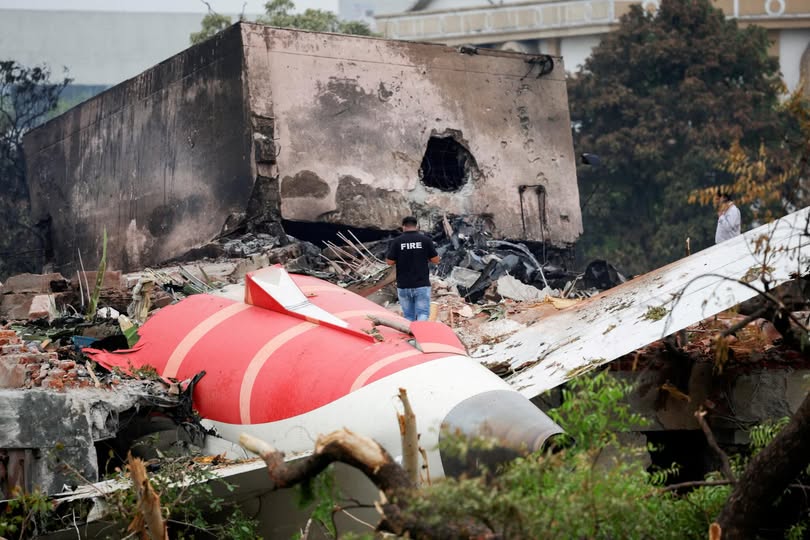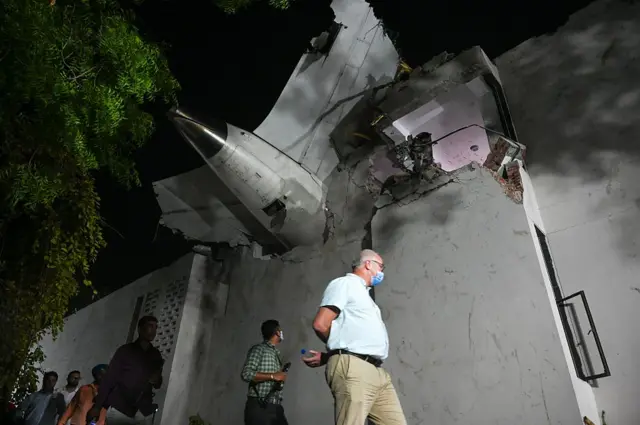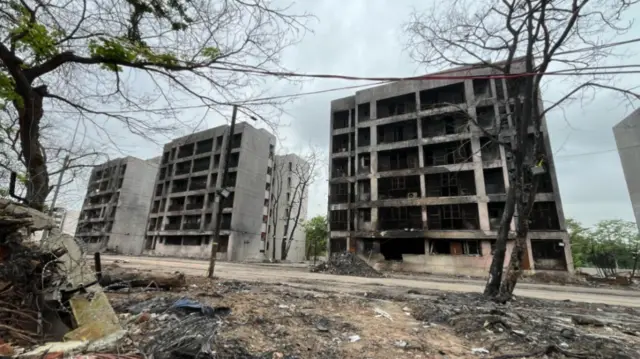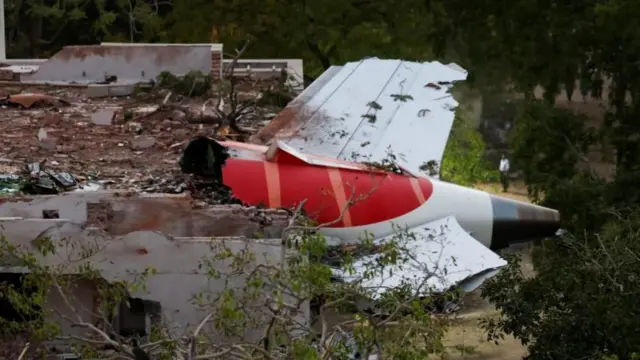
Crash impact: What happened on the groundpublished at 11:24
 Soutik Biswas
Soutik Biswas
India Correspondent
The Air India 787 was destroyed after crashing into multiple buildings outside the airport in Ahmedabad after takeoff in June.
Here’s what the preliminary report reveals:
- The aircraft hit the BJ Medical College hostel, about 0.9 nautical miles from the runway
- It clipped trees and a chimney, then crashed into a building with a slight nose-up
- Five buildings were damaged in total, with major structural and fire damage. Wreckage was scattered across a 1000ft x 400ft area
- The debris pattern shows the aircraft broke apart as it tore through structures – giving investigators some clues about its final moments

‘Knowing the reason would not change the way we grieve’ – crew member’s cousinpublished at 10:58
Ishadrita Lahiri
BBC Hindi

Lamnunthem Singson, an Air India crew member, was among the 260 people killed in the crash
Family members of the crash victims are continuing to grapple with what the release of the preliminary investigation means to them.
The cousin of Lamnunthem Singson, a crew member killed in the crash, says he is not sure if knowing the reason for the crash will change the way they are grieving.
“We are still wading through our own feelings at this point, trying to make sense of our loss,” says Ngamlienlal Kipgen.
“I believe closure comes from saying our goodbyes in our own way and living in a way that honours and celebrates them. Her story will live on through us and the many loved ones she left behind,” he adds.
Who were the plane’s two pilots?published at 10:44
 Soutik Biswas
Soutik Biswas
India Correspondent
The preliminary report has brought fresh attention to the two pilots in control of the ill-fated Air India flight.
Just seconds after takeoff, cockpit audio captured one pilot asking the other, “Why did you do the cut-off?”- referring to the fuel switch that starved the engines. The other replied, “I didn’t.” It’s still unclear who asked the question – and who answered.
Here’s what we know about the crew.
Capt Sumeet Sabharwal, 56, was a veteran with 30 years of experience at Air India. He had logged 15,638 flying hours, including 8,596 on the Boeing 787. Based in Mumbai, he lived with his elderly father and was looking forward to retirement.
First Officer Clive Kunder, 32, had 3,403 total flying hours, with 1,128 on the Dreamliner. He joined Air India in 2017 and had dreamed of flying since school.
Both were based in Mumbai and had arrived in Ahmedabad the day before the flight, with adequate rest, the report says. Kunder was the pilot flying, while Sabharwal was the pilot monitoring, it says.
The crew had passed pre-flight breathalyser tests and were seen at the gate on CCTV before they took off, the report adds.
‘Our thoughts are with the loved ones of victims’ – Boeingpublished at 10:23
In a statement following the release of the report, Boeing – the maker of the Dreamliner that crashed in June – has released a statement saying “our thoughts remain with the loved ones of the passengers and crew on board Air India Flight 171, as well as everyone affected on the ground in Ahmedabad.”
The US aviation giant adds that it continues to “defer” to India’s Aircraft Accident Investigation Bureau – which is leading the investigation – to provide information about the crashed plane in line with international protocol.
Crash site a month on desertedpublished at 10:21
Roxy Gagdekar
BBC Gujarati, Ahmedabad
 Image source,Pavan Jaishwal/BBC
Image source,Pavan Jaishwal/BBCA month after the incident, the Air India crash site in Ahmedabad, western India, remains deserted.
The road passing through the area has been closed to commercial activity since the day of the crash.
A police checkpoint has come up nearby and no-one is allowed to enter the site.
Even after a month, scorched trees and damaged buildings stand witness to the devastation caused by the deadly accident.
What we know so farpublished at 09:53
 Image source,Reuters
Image source,ReutersAs we’ve been reporting, the preliminary investigation into the Air India Flight 171 crash has been released.
If you are just joining us, here’s what we know so far:
- According to data from the flight recorder, both the fuel control switches were moved from the run to the cut-off position shortly after takeoff, causing both engines to lose thrust and the plane to sink down
- In a voice recording of the cockpit, one of the pilots is heard asking the other why he “did the cut-off” – the other pilot is heard saying he did not do so – it was not clear which pilot made the respective remarks
- The switches were then moved back into their normal in-flight position, something which would automatically start the process of relighting the engines
- One engine was able to restart, while the other relit but failed to regain thrust
- CCTV footage from the airport showed no “significant bird activity”
- The report does not draw any conclusions, and points out that the investigation is continuing